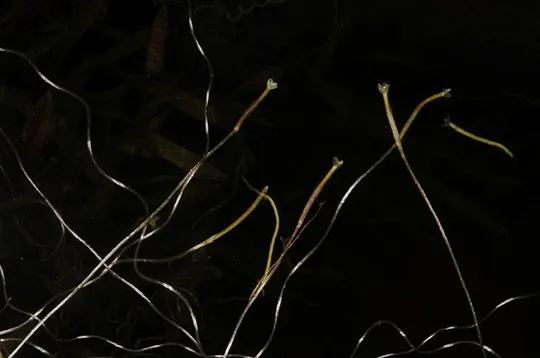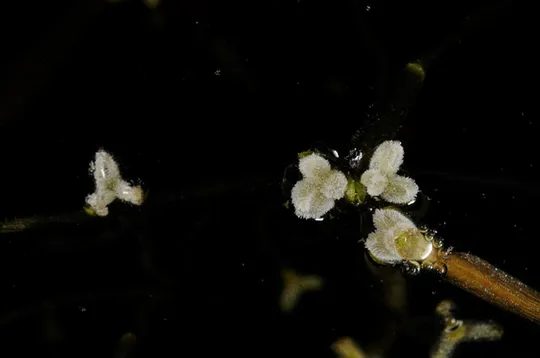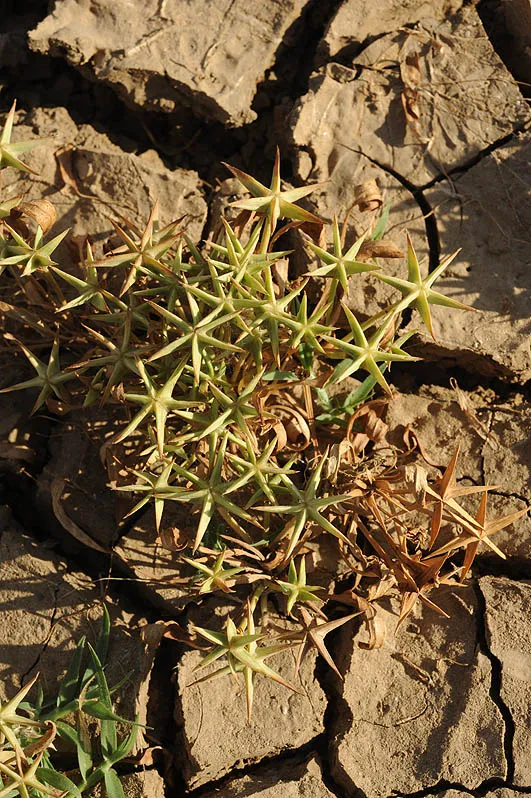Straight Vallisneria, Tape Grass
Vallisneria spiralis


All parts of the Vallisneria
spiralis plant are used as
food for
fish. The dense leaves
are used by aquatic animals to shelter in and lay eggs. It is a common aquarium plant.
Vallisneria spiralis was
collected only twice in
Israel, in 1941: in the Sharon “between Hadera and Petah
Tikva" and in the Hula lake
near Yesud HaMa’ala. Since then, for more than 50 years, V. spiralis has not been found. In 1997, the species was collected again in the Agamon
HaHula (Hula Restoration Project), and in recent years, it
has been observed in water bodies in the Sharon. These
probably originated in aquariums, where they serve as oxygen enriching plants.
Submersed plants in pools and standing bodies of water. In the past grew in the wild in the Hula marshes.
The genus Vallisneria
includes 2 to
10 species found across all continents of the world. One species grows in Europe, in the Mediterranean
Basin and in the Middle East. It
is very difficult to identify the genus, and there is great variability of
diagnostic signs within populations. Consequently, scientists are not
clear as to the precise number of species in the genus Vallisneria.
•
Vallisneria spiralis was known from two sites in Israel but disappeared and has not been seen since the 1940s.
•
The Vallisneria specimens that have been
found in nature in recent years are probably feral.
The wetlands in the Hula Valley and in the Sharon should
be surveyed to try and locate Vallisneria
spiralis. Molecular methods should be used to verify if there is a genetic difference between the cultured
populations and the natural populations in the Levant (Syria, the Nile) and to reintroduce V. spiralis from natural sources to the Agamon HaHula.
Vallisneria spiralis is a multi-regional plant that grows in extensive
tropical and temperate areas in
the world: in the Mediterranean Basin, the Irano-Turanian, Sudanian and Euro-Siberian regions. It also grows in Central Asia,
India, the Black Sea, China, Japan, Australia, Africa, South and North America. The higher the
latitude the plant grows at, the warmer
the water bodies it inhabits. In the Middle East, it
grows in Egypt in the Nile Valley, in Syria in the Jazira region and the Western Mountains, in northern Turkey, northern Iraq and Iran.
Vallisneria spiralis is a submersed water plant
that has been extinct since
the 1940s. It probably grew only in
the Hula Lake, but there is also a single specimen collected
from the Sharon region. At the global
level, the plant is not a red species at all: its distribution is cosmopolitan and it is not a peripheral plant in Israel, as it grows
in the Nile and in Syria.
ויזל, י. וליפשיץ, נ. 1971. צמחי מים בישראל. הוצאת רשות שמורות הטבע.
Current Occupancy Map
| 1000 squre meter pixel | 5000 squre meter pixel | 10000 squre meter pixel | |
|---|---|---|---|
| number of observations | 0 | 0 | 0 |
| in total pixels | 0 | 0 | 0 |
| Family | Hydrocharitaceae |
| Classification | On the endangered species list |
| Ecosystem | Bodies of Water |
| Chorotype | Multi-regional; Cosmopolitan |
| Conservation Site | Agamon HaHula |
| Rarity |
1
6
6
|
|---|---|
| Vulnerability |
0
3
4
|
| Attractiveness |
0
2
4
|
| Endemism |
0
0
4
|
| Red number |
1
-1.0
10
|
| Peripherality | 0 |
| IUCN category | DD EW EX LC CR EN VU NT |
| Threat Definition according to the red book | Extinct |
 Based on:
Based on:






